Flat Roof Systems for Commercial Buildings – A Complete Guide
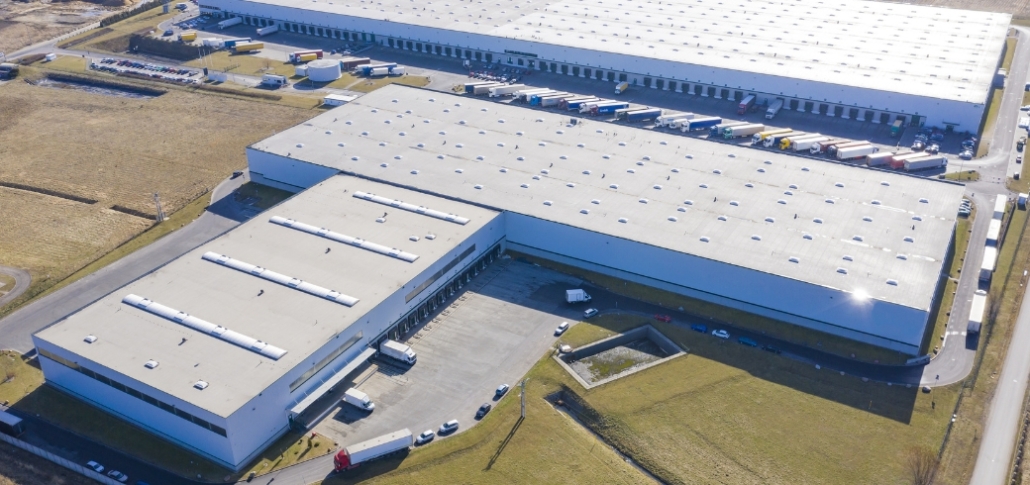
Choosing the right flat roof system for your commercial building impacts long-term performance, energy efficiency, and cost. In New England, weather conditions make this decision even more critical.
Property managers, facility directors, and business owners in Connecticut, Rhode Island, and Massachusetts need durable, cost-effective roofing solutions to protect their commercial properties. Whether managing schools, warehouses, shopping centers, or manufacturing facilities, selecting the right flat roofing system impacts energy efficiency, maintenance costs, and long-term performance. Key options include EPDM, TPO, PVC, metal, and built-up roofing—each offering unique advantages in durability, weather resistance, and insulation. Choosing the best system helps minimize repair expenses, enhance energy savings, and ensure reliable protection against New England’s harsh climate.
In this article, we’ll explore the most common flat roof systems, including:
- EPDM Roofing
- PVC Roofing
- TPO Roofing
- Single-Ply Roofing
- Liquid Coating Roofing
- Low-Slope Roofing
- Built-Up Roofing (BUR)
- Metal Roofing
We’ll break down each flat roof system, compare costs, lifespans, and performance—and help you decide what works best in New England’s unpredictable weather.
Common Types of Flat Roof Systems
There are several types of flat roof systems for commercial buildings, each offering distinct advantages. In the following sections, we’ll explore popular options like EPDM, PVC, TPO, and metal roofing, highlighting their benefits, ideal applications, and performance in New England’s climate.
1. EPDM Roofing
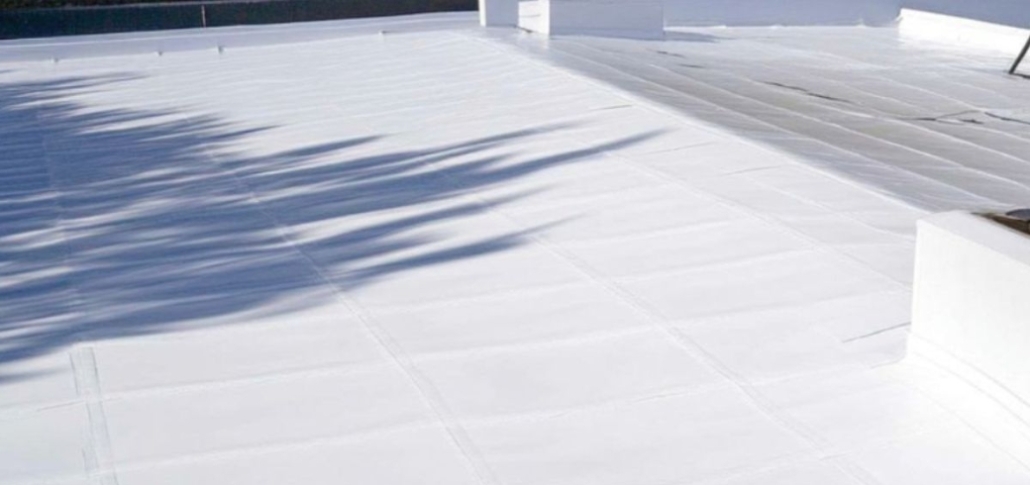
EPDM (Ethylene Propylene Diene Monomer) is a durable synthetic rubber roofing membrane used widely in commercial flat roof applications. Known for its flexibility and resilience, EPDM is particularly effective in areas with fluctuating weather conditions—making it a top choice for properties in New England.
Key Benefits of EPDM Roofing:
- Affordability: Cost-effective installation with minimal long-term maintenance.
- Longevity: Lifespan of 20–30 years with proper care.
- Weather Resistance: Performs well against UV rays, snow, and wind.
EPDM is especially suited for warehouses, schools, industrial buildings, and large commercial spaces. EPDM is easy to install and repair, especially on wide, unobstructed rooftops.
2. PVC Roofing
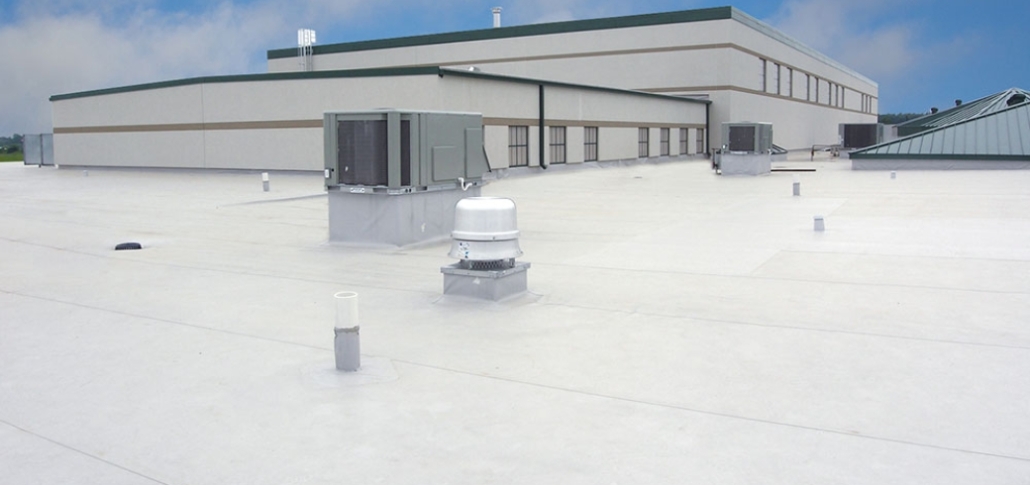
PVC (Polyvinyl Chloride) roofing is a single-ply roofing membrane known for its outstanding strength and performance. It’s heat-welded at the seams, creating a watertight bond that stands up to harsh elements and chemical exposure—making it a go-to option for demanding commercial environments.
Key Advantages of PVC Roofing:
- Durability: Resistant to punctures, fire, and high winds.
- Chemical Resistance: Ideal for facilities where oils or acids may be present.
- Energy Efficiency: White reflective surface helps reduce cooling costs.
Best for Restaurants, manufacturing plants, and facilities with rooftop grease vents or heavy foot traffic. PVC’s long-term reliability makes it a smart investment.
Request A Free Quote
Speak To Our Roofing Specialists Today!
National Roofing & Solar offers expert commercial roof replacements, leak repairs, and solar upgrades, maximizing energy efficiency and ROI.
3. TPO Roofing
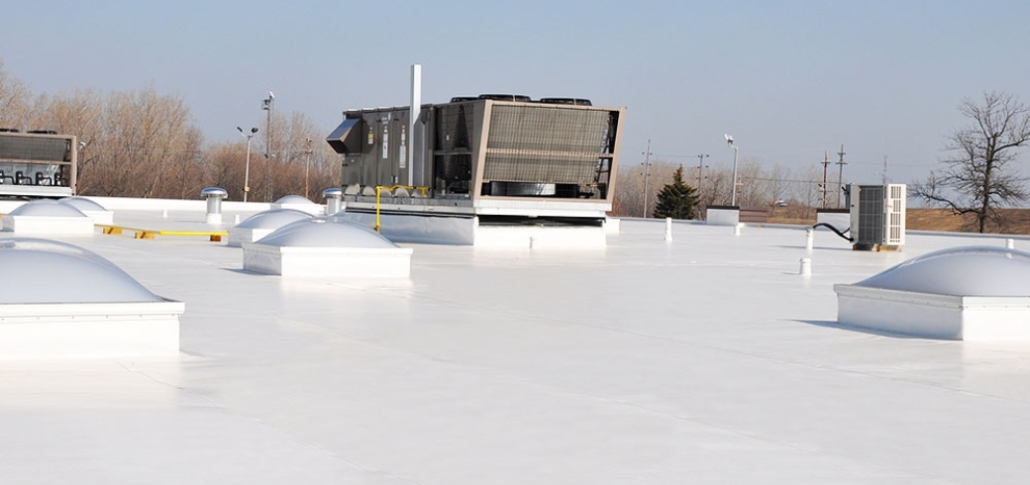
TPO roofing (Thermoplastic Olefin) is a single-ply membrane designed to deliver the best balance of performance and affordability. It’s made from a blend of polypropylene and ethylene-propylene rubber, offering excellent flexibility and durability without sacrificing budget.
Why Choose TPO Roofing?
- UV Resistance: Reflects sunlight, reducing heat absorption and lowering cooling costs.
- Cost-Effective: More affordable than PVC while offering similar energy efficiency.
- Flexible Installation: Lightweight and easy to apply over large commercial roofs.
TPO roofing is more affordable than PVC and more energy-efficient than EPDM, making it ideal for value-driven commercial projects. Flat roof systems for commercial buildings benefit from TPO’s clean, white surface and ease of maintenance.
4. Single-Ply Roofing
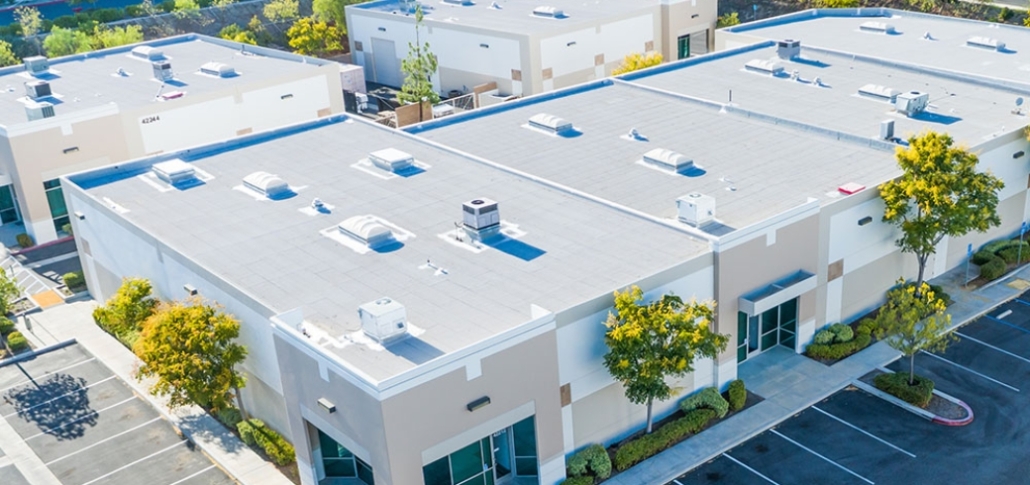
Single-ply roofing refers to flexible, durable membrane systems applied in one layer over flat or low-slope commercial roofs. These systems are typically categorized as EPDM, PVC, or TPO, each offering unique advantages based on the building’s needs and environment.
- EPDM is known for its long lifespan and weather resistance.
- PVC stands out for its chemical durability and energy efficiency.
- TPO offers a budget-friendly blend of UV resistance and flexibility.
Businesses choose single-ply roofing because it’s lightweight, quick to install, and requires minimal maintenance—making it a smart investment for property managers seeking reliability and performance. It’s a top choice for retail centers, schools, and industrial facilities.
Read More: Commercial Roof Replacement Process – Step-by-Step Guide
5. Liquid Coating Roofing
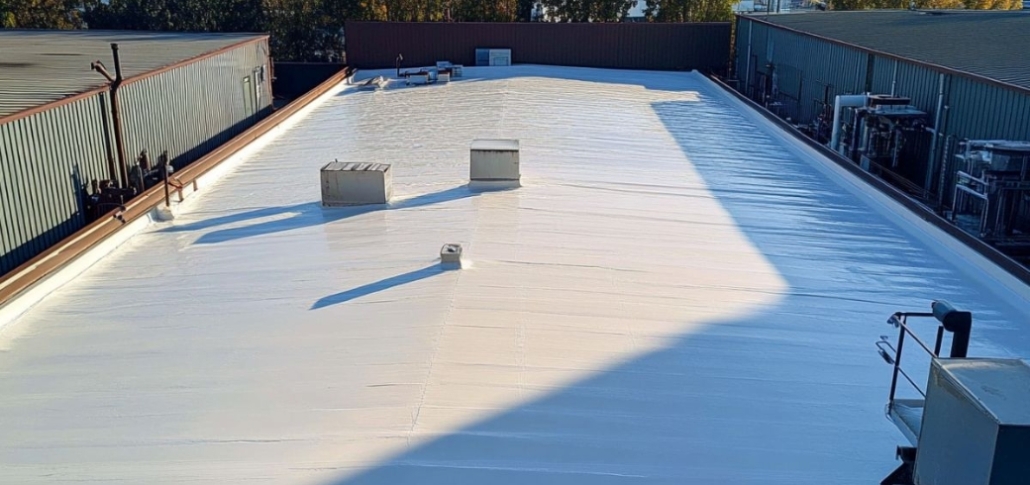
Liquid-applied roof coatings offer a seamless, protective layer that restores and extends the life of existing commercial roofs. Applied directly over the current surface, these coatings create a waterproof membrane without the need for a full roof replacement.
Benefits of Liquid Coating Roofing:
- Waterproofing: Seals cracks, seams, and leaks effectively.
- Seamless Application: No joints or edges where water can penetrate.
- Cost-Effective: Great for budget-conscious restorations without sacrificing performance.
This solution is ideal for flat roof systems for commercial buildings that need a reliable upgrade without major construction. It works especially well on aging roofs that are still structurally sound.
6. Low Slope Roofing Systems
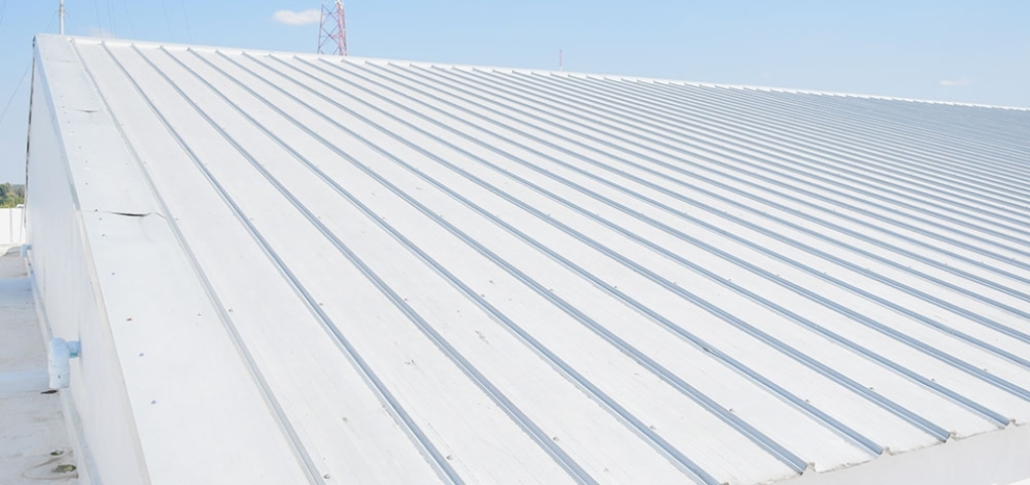
This roofing system is commonly found on commercial buildings and is defined by a pitch of less than 3:12. These roofs typically use materials like TPO, EPDM, PVC, or modified bitumen to provide reliable waterproofing and energy efficiency. Because of their design, low-slope systems allow for easier access, making them ideal for HVAC units, solar panels, and maintenance tasks.
This system is a smart fit for flat roof systems for commercial buildings, offering better drainage design and reduced material costs compared to steeper roofs. However, maintenance is key—regular inspections help prevent ponding water and membrane wear. With the right materials and upkeep, low slope roofs can last decades.
7. Asphalt Roofing (Built-Up Roofing – BUR)
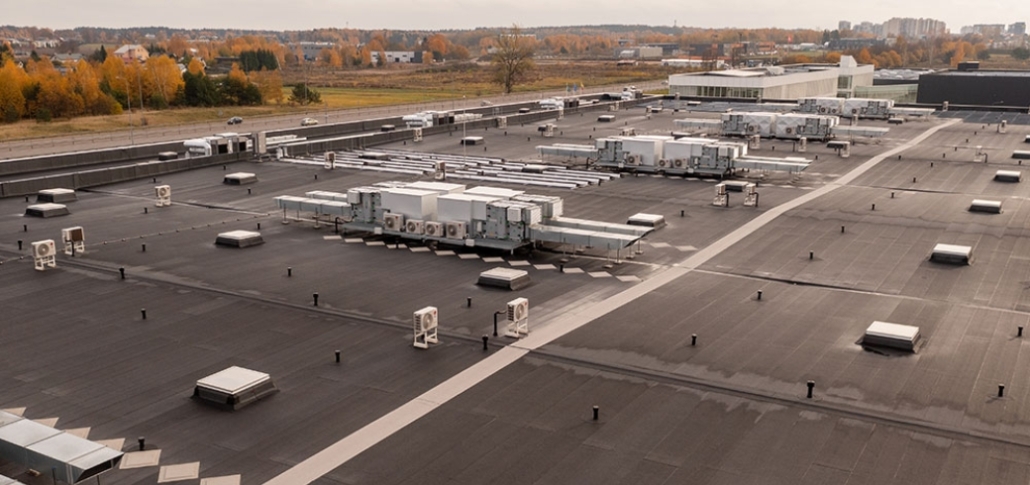
Built-Up Roofing (BUR) systems have been a reliable choice for decades, especially in commercial construction. Made from alternating layers of asphalt and reinforcing fabrics, these systems create a multi-layer barrier that offers exceptional strength and protection.
The main advantage of BUR is its durability—the multiple layers enhance resistance to water infiltration and impact. Additionally, the top layer is often finished with gravel or a reflective coating to improve UV resistance and insulation.
BUR is commonly used on office buildings, schools, and manufacturing facilities where long-term performance and weather protection are essential. It’s a great solution for property owners seeking a time-tested roofing method.
8. Metal Roofing
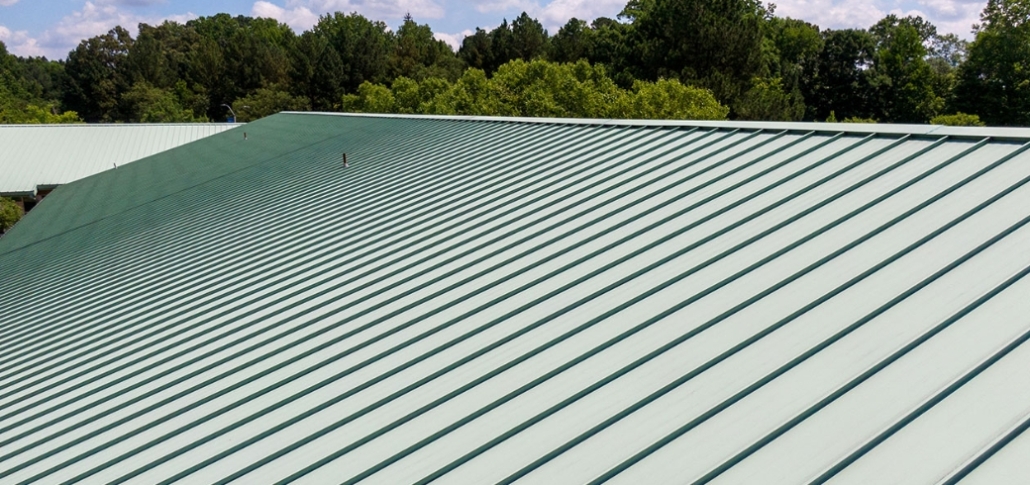
This roofing can be effectively used on flat or low-slope commercial buildings, especially when designed with standing seam panels or mechanically seamed systems. These configurations ensure proper water runoff and long-term performance, even in challenging New England climates.
Benefits of Metal Roofing:
- Longevity: Can last 40–50 years or more with minimal maintenance.
- Fire Resistance: Non-combustible, providing an added layer of safety.
- Sustainability: Often made from recycled materials and fully recyclable at end of life.
For commercial properties, metal roofs are ideal for facilities aiming to reduce lifecycle costs and enhance building efficiency. Proper insulation and installation are key to managing noise, condensation, and thermal movement.
Request A Free Quote
Speak To Our Roofing Specialists Today!
National Roofing & Solar offers expert commercial roof replacements, leak repairs, and solar upgrades, maximizing energy efficiency and ROI.
Climate Considerations for New England (CT, RI, MA)
New England’s harsh climate presents unique challenges for flat roof systems. In this section, we’ll explore key factors such as snow load, drainage needs, energy efficiency, insulation requirements, and the importance of complying with local building codes for optimal roof performance.
Weather Challenges: Snow, Rain, Wind
In the Northeast, commercial flat roofs face intense seasonal stress from snow accumulation, heavy rainfall, and high winds. Unlike pitched roofs, flat surfaces don’t shed water or snow easily, making drainage a critical design component. Improper slope or clogged drains can lead to ponding water, which increases the risk of leaks and membrane damage over time.
Snow load is another major concern in regions like CT, RI, and MA. Flat roofs must be engineered to support significant weight during winter storms. Excessive buildup can cause sagging or even structural failure if not properly addressed. To combat these risks, businesses should prioritize materials rated for wind uplift and install proactive drainage systems designed for local climate demands.
Energy Efficiency & Insulation Needs
Energy performance is a key consideration when selecting flat roof systems for commercial buildings, especially in climates with hot summers and freezing winters like CT, RI, and MA. The right insulation reduces heat loss in winter and heat gain in summer, easing the strain on HVAC systems and lowering utility bills.
Material choice directly affects efficiency. For instance, white or reflective membranes like TPO and PVC help reduce cooling costs, while built-up and metal systems can be paired with rigid insulation to enhance thermal performance.
In colder regions, thicker insulation and sealed seams help prevent ice dams and heat escape. Choosing climate-appropriate materials ensures comfort, durability, and long-term energy savings.
Building Codes & Compliance
Commercial roofing projects in Connecticut, Rhode Island, and Massachusetts must adhere to strict state and local building codes. These regulations are in place to ensure structural safety, energy efficiency, fire resistance, and storm resilience.
Roofing systems must meet specific standards for wind uplift, insulation R-values, drainage, and snow load capacity, particularly given the region’s challenging weather.
Contractors must also comply with permitting requirements and inspection protocols before, during, and after installation. Using code-compliant materials and installation techniques helps avoid costly delays, legal issues, or failed inspections.
Working with a roofing contractor familiar with CT, RI, and MA regulations ensures the entire process—from design to execution—is fully aligned with local compliance standards.
At National Roofing, we provide durable, cost-effective solutions tailored to your needs. Trust us to deliver a roof that lasts—contact us today to get started!
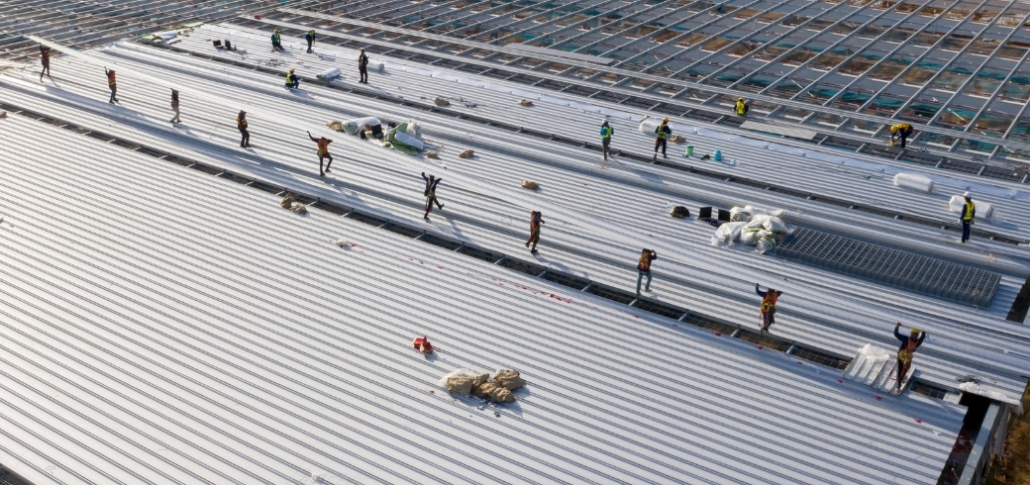
Cost & Lifespan of Flat Roofing Systems
When considering flat roof systems, it’s essential to evaluate both the initial installation costs and long-term maintenance needs. In this section, we’ll break down the cost of various roofing types, their expected lifespan, and the maintenance required to keep them in top condition.
Request A Free Quote
Speak To Our Roofing Specialists Today!
National Roofing & Solar offers expert commercial roof replacements, leak repairs, and solar upgrades, maximizing energy efficiency and ROI.
Initial Installation Costs
The initial installation costs of a commercial flat roof can vary significantly based on the material chosen. On average, EPDM roofing costs between $4–$8 per square foot, making it one of the most affordable options for businesses.
TPO roofing typically falls in the range of $5–$9 per square foot, offering a balance between cost and energy efficiency. PVC roofing, while more expensive, generally costs $6–$10 per square foot due to its durability and chemical resistance.
Built-up roofing (BUR) costs about $5–$8 per square foot, while metal roofing can run between $10–$16 per square foot due to its longevity and material strength. The final price will also depend on the complexity of the installation, the size of the roof, and the region’s specific requirements.
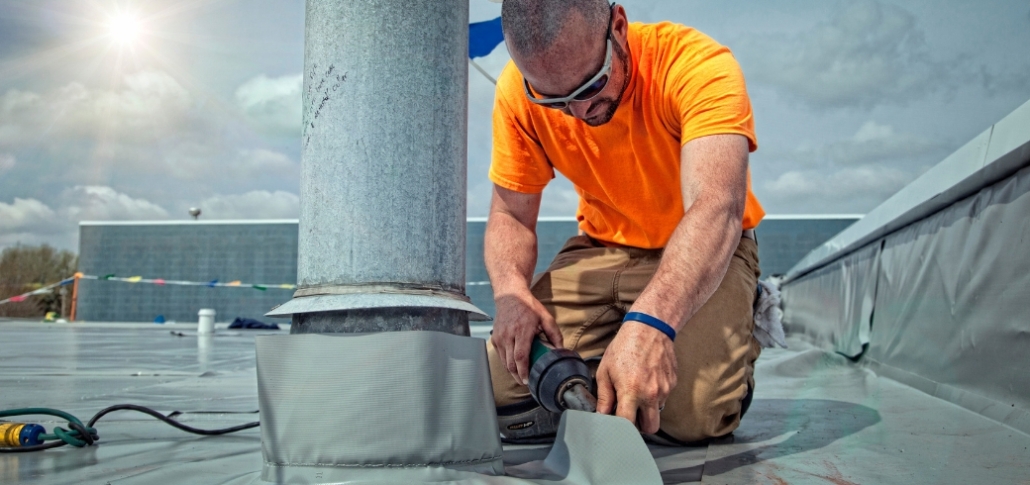
Long-Term Maintenance & Repairs
When considering flat roof systems for commercial buildings, it’s essential to factor in long-term maintenance and repair needs. Some roofing systems require more frequent upkeep than others.
EPDM roofing, for example, is relatively low-maintenance and only needs occasional inspections for seam integrity and debris removal. In contrast, built-up roofing (BUR) systems with multiple layers often need more attention due to potential issues with water infiltration, seam failure, and debris accumulation.
Metal roofing requires minimal maintenance, but sealants around fasteners may need to be checked periodically. PVC and TPO roofing systems are also low-maintenance but benefit from regular inspections to ensure that seams and edges remain intact. Regularly addressing minor repairs can significantly extend the lifespan of your commercial flat roof system.
Expected Lifespan
The lifespan of a commercial roofing system is heavily influenced by local climate conditions, especially in areas like New England, where winters are harsh and summers can be hot and humid.
- EPDM roofing typically lasts 20–30 years in this climate, as its durable synthetic rubber resists the region’s temperature fluctuations and UV exposure.
- TPO roofing has a similar lifespan of 15–25 years, thanks to its flexibility and energy-efficient properties.
- PVC roofing can last 20–30 years, especially in areas with high chemical exposure, due to its resilience and waterproofing capabilities.
- Metal roofing is the longest-lasting option, with a lifespan of 40–50 years, making it an excellent choice for long-term investments.
- BUR systems generally last 20–25 years, though the multiple layers offer added protection.

Roof Maintenance & Inspection
Proper maintenance and regular inspections are essential for ensuring the longevity of flat roof systems for commercial buildings. In this section, we’ll cover key preventative maintenance tips, common issues like ponding water and membrane damage, and how often commercial roofs should be inspected to maintain optimal performance.
Preventative Maintenance Tips
Regular preventative maintenance is key to extending the lifespan of your commercial flat roof. Start by cleaning the roof frequently, removing debris such as leaves, branches, and dirt, which can clog drains and cause water buildup.
Drainage management is essential—ensure all gutters, downspouts, and drains are free of blockages to prevent water pooling, which can lead to leaks and structural damage.
Finally, regular inspections should be conducted at least twice a year, especially after storms. Look for signs of wear, such as cracks, blisters, or loose seams, and address them early to avoid costly repairs.
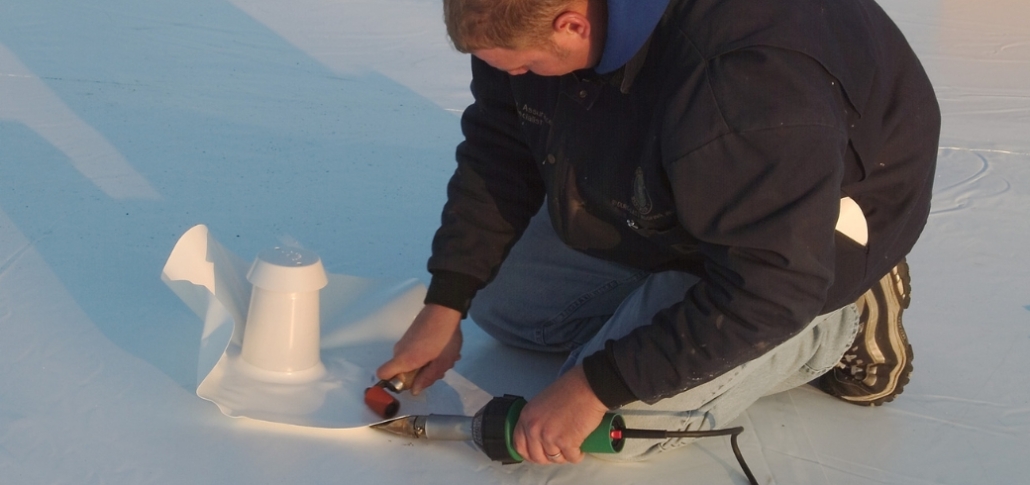
Common Flat Roof Issues & Repairs
Flat roofs are prone to specific issues due to their low-slope design. Ponding water is a common problem, especially when drains become clogged or the roof lacks proper slope. This stagnant water can cause leaks, weaken the roof structure, and accelerate wear.
Leaks often occur at seams, flashing, or areas of damage, allowing water to infiltrate the building. Regular checks for moisture inside the building are essential.
Membrane damage can result from UV exposure, foot traffic, or harsh weather. It’s crucial to repair any punctures or cracks immediately to avoid further deterioration and costly repairs.
Request A Free Quote
Speak To Our Roofing Specialists Today!
National Roofing & Solar offers expert commercial roof replacements, leak repairs, and solar upgrades, maximizing energy efficiency and ROI.
How Often Should Commercial Roofs Be Inspected?
For flat roof systems for commercial buildings, regular inspections are crucial to identify and address issues early, saving money in the long run.
In New England’s challenging climate, it’s recommended that businesses schedule inspections at least twice a year, ideally in the spring and fall.
Inspections should also be conducted after severe weather events, such as heavy snowstorms, rain, or high winds, to check for potential damage.This schedule ensures that drainage systems are clear, membranes are intact, and any signs of wear or leaks are promptly addressed, preserving the roof’s integrity.
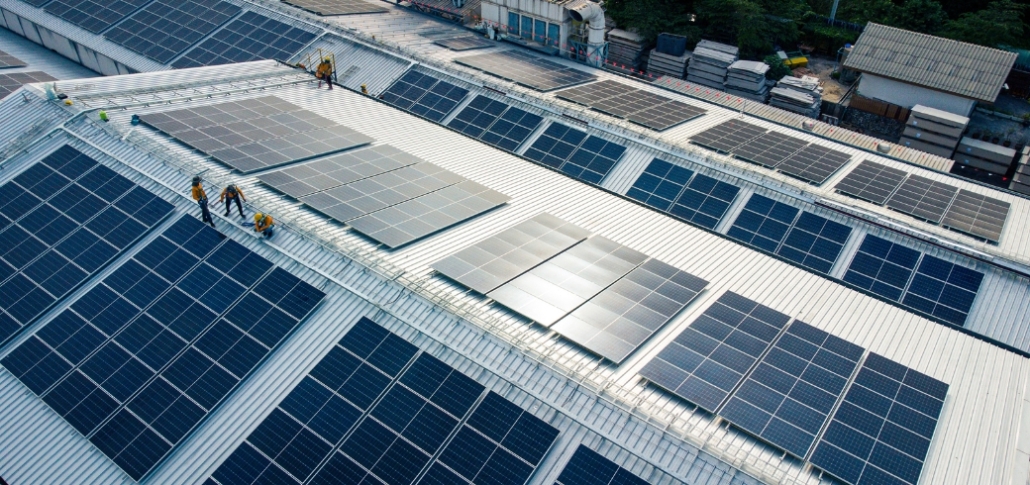
Energy Efficiency & Sustainability
To enhance energy efficiency in flat roof systems for commercial buildings, solutions like cool roof coatings, reflective materials, and solar integration are key. In this section, we explore how these methods can reduce energy costs, boost sustainability, and provide valuable incentives for businesses in New England.
Cool Roof Coatings & Reflective Materials
One of the most effective ways to enhance the energy efficiency of flat roof systems is by incorporating cool roof coatings or choosing reflective roofing materials.
These solutions are designed to minimize heat absorption, which becomes especially important in the summer months when temperatures rise.
Cool Roof Coatings: These reflective coatings are applied directly to the roof’s surface and work by reflecting sunlight, which lowers the roof’s temperature. As a result, less heat enters the building, reducing the reliance on air conditioning and lowering energy bills.
Cool roof coatings can be easily applied to existing roofing systems, making them an affordable and efficient upgrade for commercial properties looking to improve energy performance.
Reflective Roofing Materials: Materials like TPO, PVC, and modified bitumen offer natural reflective properties that help prevent excessive heat absorption. These materials are excellent at lowering the cooling load, particularly in warmer climates.
In New England, where summers can get quite hot, these materials can provide significant energy savings by reducing the need for artificial cooling, promoting both sustainability and cost efficiency.
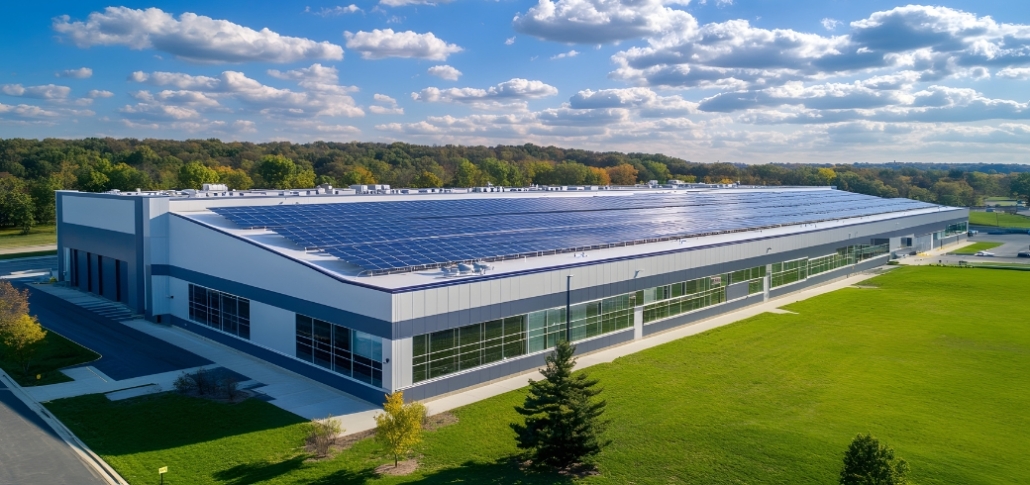
Solar Roofing Integration
Integrating solar panels into flat roof systems for commercial buildings offers a sustainable solution that provides long-term financial and environmental benefits for businesses in Connecticut (CT), Rhode Island (RI), and Massachusetts (MA). Solar roofing systems allow businesses to generate renewable energy on-site, reducing reliance on the grid and significantly lowering monthly utility costs.
Benefits for CT, RI, and MA Businesses: Solar panels are particularly well-suited for flat roofs as they can be installed at the optimal angle for maximum sunlight exposure. This allows commercial properties to harness solar energy efficiently, resulting in reduced electricity bills.
Additionally, businesses may be eligible to sell excess energy back to the grid, offering further financial return through incentives and rebates.
Request A Free Quote
Speak To Our Roofing Specialists Today!
National Roofing & Solar offers expert commercial roof replacements, leak repairs, and solar upgrades, maximizing energy efficiency and ROI.
Tax Incentives & Rebates
For businesses in Connecticut (CT), Rhode Island (RI), and Massachusetts (MA), there are several programs and incentives designed to encourage the adoption of energy-efficient roofing systems, including solar panels and cool roof coatings. These incentives can significantly reduce the initial investment and improve the financial return on roofing upgrades.
Available Programs:
- Federal Investment Tax Credit (ITC): This program offers a 26% tax credit for the installation of solar systems on commercial properties.
- Massachusetts SMART Program: Provides incentives for solar energy generation, offering performance-based incentives to reduce energy costs.
- Connecticut Green Bank: Offers financing options for energy-efficient improvements, including solar installations.
- Rhode Island Solar Incentives: Provides rebates and incentives for businesses installing solar panels, helping to offset installation costs.
These programs, combined with state-specific rebates, make it easier for commercial property owners to invest in energy-efficient roofing systems that save on long-term operational costs and reduce their carbon footprint.
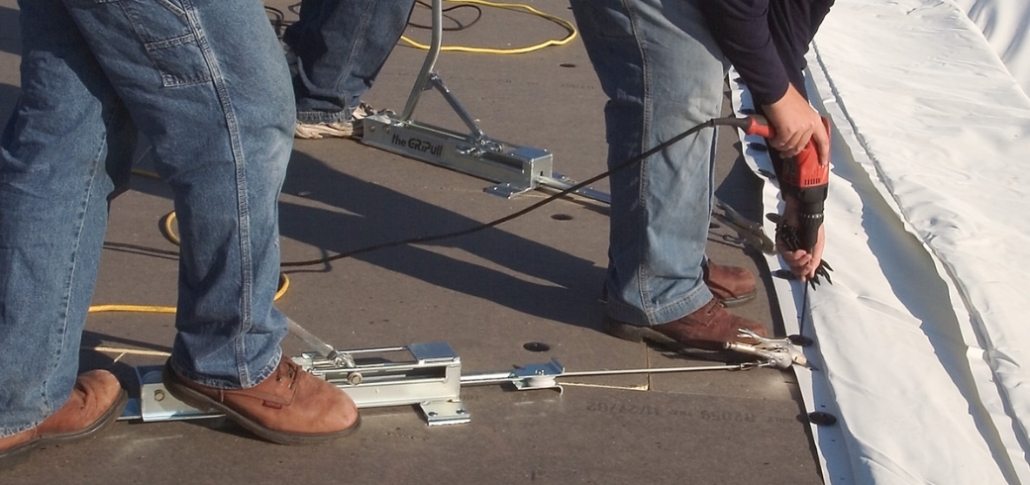
Choosing the Right Roofing Contractor in CT, RI, MA
When choosing a roofing contractor in Connecticut (CT), Rhode Island (RI), and Massachusetts (MA), prioritize licensing, experience, and warranties. A licensed contractor ensures compliance with local codes and safety standards.
Experience is key—choose one with a proven track record in handling flat roof systems for commercial buildings. This expertise ensures they can tackle challenges like drainage and snow load.
Reputable contractors also offer warranties on materials and labor, giving you peace of mind and protection against unexpected repairs.
What to Look for in a Commercial Roofing Company
When selecting a commercial roofing company for flat roof systems for commercial buildings, it’s essential to choose a contractor with the right qualifications and experience to ensure a successful installation or repair.
First and foremost, check that the company is licensed and insured. This ensures they meet local building codes and regulations while providing coverage in case of accidents or damage during the project.
Experience is another critical factor. Choose a company with a proven track record in handling commercial roofing projects, especially those similar to your building’s needs. A reputable company should be able to provide case studies, client references, or portfolio examples.
Additionally, consider the warranties offered. A good roofing company should provide comprehensive warranties that cover both materials and labor. This gives you peace of mind, knowing that any future issues will be addressed without additional cost.
Questions to Ask Before Hiring
Before hiring a commercial roofing company, it’s important to ask the right questions to ensure you’re getting the best service for your investment. Here are a few key questions to consider:
- What roofing materials do you recommend and why?
Understanding the materials a company recommends and why they are suitable for your building is essential. Different materials offer different benefits, and the right choice depends on your building’s needs and budget. - What is the project timeline?
Ask for a clear estimate of how long the project will take, from start to finish. Make sure they can commit to your schedule and manage any potential delays. - What is the total cost, and what does it include?
Ensure that the price is all-inclusive—covering materials, labor, and potential additional costs. Understanding the breakdown of the costs helps you avoid surprise charges.
Asking these questions will help ensure you make an informed decision and choose a roofing company that meets your needs.
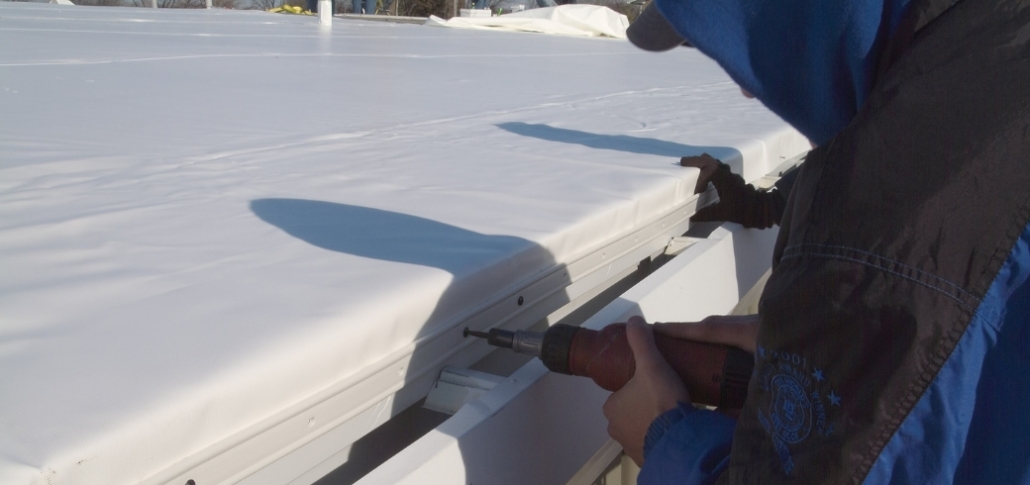
Why Local Expertise Matters
When selecting a commercial roofing contractor, working with a company that has local expertise can significantly improve the outcome of your project. A contractor familiar with the region’s climate challenges, such as the heavy snow and harsh winters in New England, will have a deeper understanding of how to design and install roofing systems that withstand these conditions.
Benefits of Local Expertise:
- Climate-Specific Solutions: Local contractors are familiar with the weather patterns and can recommend roofing materials that are best suited to endure extreme cold, snow loads, and high winds.
- Knowledge of Building Codes: Local companies stay up-to-date with regional regulations and codes, ensuring that your roof complies with all necessary safety standards.
- Faster Response Times: A local contractor can offer quicker inspections, repairs, and support, reducing downtime in case of emergencies.
By choosing a contractor who understands local conditions, you can ensure your roof performs at its best throughout the year.
Request A Free Quote
Speak To Our Roofing Specialists Today!
National Roofing & Solar offers expert commercial roof replacements, leak repairs, and solar upgrades, maximizing energy efficiency and ROI.
Conclusion
Choosing the right flat roof system for commercial buildings is crucial for ensuring long-term durability, energy efficiency, and cost savings. From EPDM roofing to metal roofing and solar roofing integration, the right materials and proper installation make a significant difference in the performance of your roof.
By understanding how local climate conditions affect roofing materials and working with a trusted contractor, you can extend the lifespan of your roof and protect your investment for years to come.
If you’re ready to ensure your building is well-protected, schedule a free roof inspection with one of our local experts at National Roofing & Solar. Our team will assess the condition of your roof, provide a comprehensive evaluation, and recommend the best solution for your needs.
Contact us today to get started. Whether you’re in Connecticut, Rhode Island, or Massachusetts, we’re here to help guide you every step of the way!


